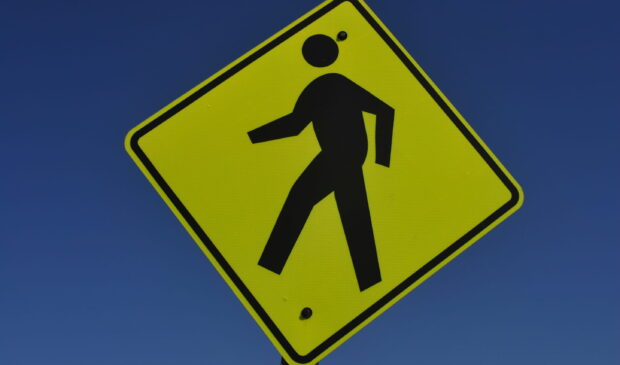Commission looks into how Austin creates street crossings
Tuesday, September 12, 2023 by
Elizabeth Pagano There’s a simple explanation for why Austinites may have noticed more signaled crosswalks in recent years: There are more.
A recent discussion on the state of pedestrian hybrid beacons in the city caught up Urban Transportation Commission members on the state of their progress last week.
The city didn’t have tools to help people cross busy streets until about 2008, when the city worked with the state Legislature to permit those crosswalks with the flashing red lights above them that are known as pedestrian hybrid beacons, or PHBs. In fact, the city installed its first PHB at Lamar Boulevard and 45th Street in 2009. Since then, a total of 111 have been installed, with 140 planned by 2025.
“We have the second-most number of PHBs in the country, behind Tucson,” said Brian Craig, who is with the city’s Transportation and Public Works Department.
At first, the crossings were established through a request-driven process that let the public take the lead on where they were most needed. In 2015, prioritization criteria was added that looked at things like the distance to the next crossing, speed limit, crash history, safe routes to schools and equity issues. And in 2021 a new system was implemented that was more data-driven.
Active Transportation and Street Design Division Manager Laura Dierenfield told the commission that PHBs are an important tool in addressing the $500 million problem of pedestrian safety gaps that currently exists in Austin.
Generally speaking, said Craig, pedestrian hybrid beacons cost about $200,000, compared to the $450,000 cost of a traffic light. Occasionally, as was the case for the Grove Planned Unit Development, the cost is sometimes covered by developers. In addition, sometimes the beacons are covered by Street Impact Fees that are paid by developments.
Commissioner Spencer Schumacher commended staff for the criteria used to determine where the crossings are located. “There’s actually been a pretty big backlash online about how most city governments go about funding that,” he said, noting that prioritizing crossings by public demand “makes no sense” because it fails to take into account that before the crossings are established, crossing the street at those places is generally illegal.
The presentation came near the first anniversary of a crash that killed one pedestrian and injured another at a pedestrian hybrid beacon at Riverside and Alameda drives. Schumacher asked whether, since then, the city had made changes to determine where crossings were located and how they were designed.
Though changes were made to that crossing following the fatal crash, Craig said he didn’t think the city had changed anything specifically about the process.
“We do evaluate sight distance when we install these,” he said. “(That) was in place before the fatality … (and) there’s advanced warning flashers there.”
“Typically, we do try to install these where the desired lines for pedestrians to cross are,” said Craig.
The Austin Monitor’s work is made possible by donations from the community. Though our reporting covers donors from time to time, we are careful to keep business and editorial efforts separate while maintaining transparency. A complete list of donors is available here, and our code of ethics is explained here.
You're a community leader
And we’re honored you look to us for serious, in-depth news. You know a strong community needs local and dedicated watchdog reporting. We’re here for you and that won’t change. Now will you take the powerful next step and support our nonprofit news organization?








